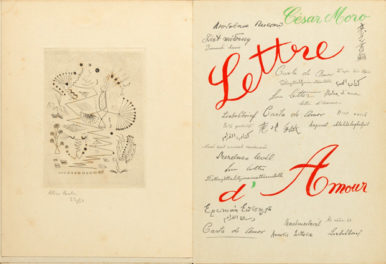Question of the Week is a series inspired by our Masterpiece of the Week tours, offered daily at 4:00 p.m. Featuring an open and upbeat discussion among visitors and gallery teachers, the tours feature a new object and pose a new question each week.
How do we envision our leaders? Painted and sculpted portraits of our U.S. presidents, from George Washington to Barack Obama, give us ideal images.

Bust of Emperor Caracalla, Bartolomeo Cavaceppi, Italian, Rome, about 1750–70. Marble, 28 in. high
Through the ages, artists who create portraits of leaders—presidents, kings, queens, popes, generals—have been inspired by sculptures of ancient Roman emperors, brilliant examples of political portraiture.
In this bust, Italian sculptor Bartolomeo Cavaceppi presents us Emperor Caracalla, a brutal military leader who committed ruthless acts (he murdered his own brother, for starters), but who was also known for his generous deeds, such as raising soldiers’ pay and introducing universal citizenship.
How do you see this Caracalla: ferocious and despotic, or strong and resolute? Could it be that we like a hint of the ferocious in our leaders?
Which makes me wonder: Is it better for rulers to be loved—or feared? Can they be both?




My question would be, “loved by whom, and feared by whom”? I think many of us secretly want a leader who we can love, but who our enemies must fear.
I think we definitely like a hint of the ferocious in our leaders, which means there’s danger in being too loved. Obama’s recent Indonesia trip reminded me of how much adulation he received in the early days of his presidency. Did all that love set him up for a fall? And did winning the Nobel Peace Prize do the same? Despite our claims to the contrary, I’m not sure we actually want a peace-maker as our president. We want a Caracalla.
I am fascinated by his gaze – where is he looking? What is he looking at? Can
we really tell what he’s seeing by the look on his face.
This may seem totally of-base. But this portrait of Caracalla has some resemblance to Shepherd Fairey’s famous “Change” poster image of Obama. http://en.wikipedia.org/wiki/File:Barack_Obama_Hope_poster.svg
Obama is looking to the left also – but he looks up slightly and has a calm face. Caracalla looks left and to the side, and his brow is pinched slightly. How amazing that the slight nuances in facial expression and chin height can express such different emotions! What are they looking at?!
Hi Lisa and Elizabeth,
In a recent gallery talk on the Caracalla sculpture, I asked our visitors if it would be possible to take the words “fear” and “love”, and transform them into the word “respect”. One man responded that no matter how a ruler is perceived – and this perception is personal to each individual – there is never a guarantee that he or she will be loved by all.
Regarding the Caracalla bust portrait, his scowling look, turning gesture and military cloak are reminiscent of a stern Roman general in control of his troops. We can only surmise as to whether or not he is contemplating a command to his soldiers or political issues regarding his empire.
But no matter how ferocious or brutal he may appear, Caracalla was well-respected and loved by his soldiers, even after his assassination. When I look at Cavaceppi’s marble sculpture or even the third century bust that the artist was inspired by, I see a military commander who is very self-assured. And, perhaps this is the quality that one also sees in the Shepard Fairey “Hope” poster of our president.
Your question has been answered by a notorious colleague of Caracalla, emperor Caligula, who was fond of saying ‘oderint dum metuant'(they are free to hate me, as long as they are afraid of me). This is perhaps the most cynical conception of leadership which, alas, is far from outdated.
A portrait as this one represented an official view of the Emperor. This was the way he wanted to be seen. Caracalla is not kindly posing for the sculptor, hoping that his subjects will appreciate the likeness of their beloved leader. He is absorbed in his own world and it his willpower alone that guides him, regardless of our feelings. In this portrait I see an uncanny alertness, an energy that transcends the marble. That is perhaps why it appealed to Michelangelo when he carved his bust of Brutus as a vigilant defender of liberty.
Leadership needs to radiate such energy, also for a good and just cause. A leader, even if democratically chosen, who’s main concern is to be reasonable and transparent or even to ingratiate himself with his people will have great difficulty in earning their respect. He or she must always be somewhat unpredictable, and thus remain a riddle to them, lest they might think they would do a better job themselves.
Hi Fred — Wonderful observations! I agree that this emperor is indeed very much alive, and therein lies the skill of the portraitist, who must decide whether to idealize his subject or not. In this case, a realistically rendered Caracalla — complete with wrinkles and jowls — exudes a great deal of power toward the viewer.
What the hell is he looking at that has him looking like that?